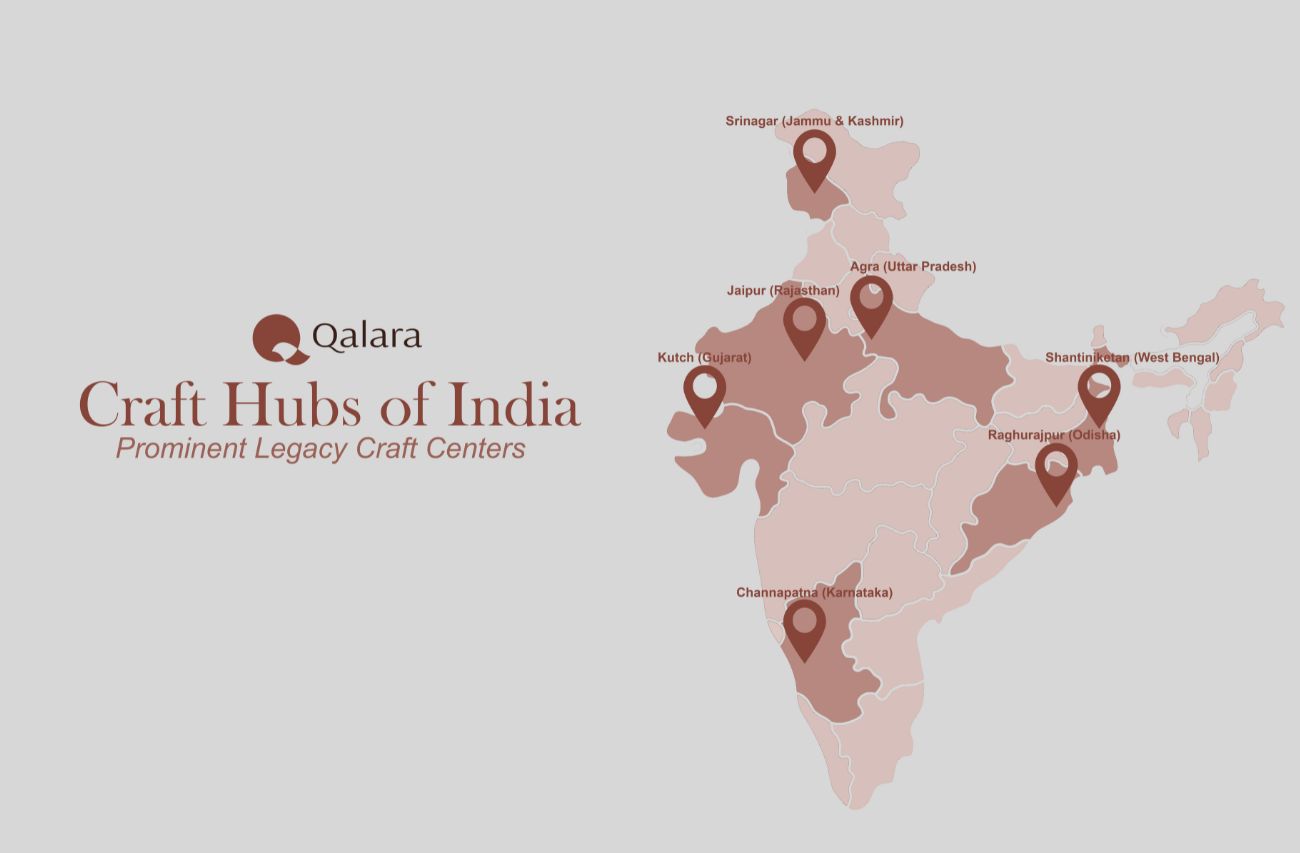
f you’ve walked through any American home store lately, chances are you’ve already seen a little piece of India — a handwoven rug from Panipat, brass candleholders from Moradabad, or mango wood trays from Saharanpur. India has quietly become one of the world’s most reliable and design-forward sourcing bases for home and lifestyle products. For U.S. retailers navigating tariffs, rising costs, and supply chain disruptions, India offers a rare balance — craftsmanship, scale, and sustainability — all in one place.
In fact, the United States is among India’s largest export destinations for home and lifestyle categories, spanning textiles, kitchenware, décor, furniture, and handicrafts. In FY 2023, India’s home textile exports to the U.S. alone crossed USD 8 billion, accounting for nearly 60% of the country’s total home textile exports.
With over 65% of U.S. retailers planning to reduce dependency on China by 2026 (as reported by McKinsey’s State of Fashion 2025), India’s clusters — from Panipat’s textiles and Moradabad’s metalware to Saharanpur’s woodcraft and Jaipur’s artisanal décor — are emerging as natural alternatives. These clusters combine competitive landed costs with centuries-old craftsmanship and flexible production capacities.
Still, sourcing isn’t just about discovering suppliers — it’s about building smooth, compliant, and profitable import operations.
Here’s a step-by-step guide, by Qalara, to help U.S. retailers and importers navigate the process of sourcing and importing home and lifestyle products from India — from finding reliable suppliers to managing logistics and compliance.
Step 1: Identify & Vet Reliable Indian Suppliers
Whether you’re sourcing rugs, cushions, enamel serveware, or bamboo baskets, the first step is finding export-ready manufacturers.
- Trade shows like the IHGF Delhi Fair and Ambiente Frankfurt showcase thousands of Indian exporters under one roof.
- Online directories, such as IndiaMART or TradeIndia provide, access to suppliers but require extensive vetting by the buyer.
- Buying offices or sourcing agents can provide local oversight, though they often come with higher costs and limited scalability.
- Managed sourcing platforms streamline discovery and due diligence by combining technology with on-ground expertise.
Platforms like Qalara offer access to pre-vetted factories, sampling and customization, quality audits, and consolidated logistics. According to BCG’s Global Supply Chain Risk Report 2023, more than 40% of disruptions arise from poor supplier vetting — something managed sourcing platforms are designed to prevent.
Step 2: Understand U.S. Import Regulations & Documentation
Navigating U.S. import laws is key to ensuring smooth customs clearance. The U.S. Customs and Border Protection (CBP) and other federal agencies regulate all imports of home and lifestyle products.
Here’s what to get right:
- HS Code Classification: Accurate coding ensures the correct duty rate and prevents fines or delays.
- Import Duties & Tariffs: Many Indian home categories enjoy competitive MFN duty rates, with some benefiting from preferential trade arrangements.
- Product Safety & Labeling:
- Textiles → Must meet FTC fiber content and flammability standards.
- Kitchenware / Food-contact products → Must comply with FDA or LFGB norms.
- Children’s products → Require CPSIA compliance and safety certification.
- Country of Origin Labeling: “Made in India” should be clearly marked and permanent.
- Customs Entry Filing: CBP Form 3461 (for release) and Form 7501 (for entry summary) are essential.
CBP reports indicate that misclassification and labeling issues rank among the top three causes of import delays for lifestyle goods entering U.S. ports.
Also read: Best Way to Source Textile from India
Step 3: Logistics, Consolidation & Freight Planning
Efficient logistics and well-planned freight management form the backbone of any profitable import operation, directly influencing lead times, landed costs, and overall reliability. Here are some key considerations to help streamline your logistics process and avoid common pitfalls.
- Consolidation: Combining multiple SKUs or supplier orders into one container reduces freight costs and simplifies documentation.
- Incoterms: Clearly define terms like FOB, CIF, or DDP to set responsibilities for shipping, insurance, and delivery.
- Insurance: Protect shipments from potential loss, damage, or delays with marine and cargo insurance.
- Visibility tools: Real-time shipment tracking and proactive customs support ensure transparency and minimize disruption.
Managed sourcing platforms such as Qalara offer integrated freight consolidation, export documentation, and customs coordination — ensuring shipments move smoothly from Indian clusters to U.S. warehouses.
Sourcing from India, Simplified: How Qalara Helps U.S. Retailers
For U.S. retailers and importers, Qalara acts as a reliable sourcing partner — not just a platform. It bridges the gap between discovering great Indian suppliers and managing the complexities of import execution.
Through Qalara’s single, transparent interface, U.S. buyers can:
- Access a curated and vetted supplier network across décor, textiles, kitchenware, and furniture categories
- Develop custom collections with dedicated sourcing experts and design support
- Ensure quality and compliance through audits, inspections, and export documentation management
- Consolidate multi-vendor shipments for cost-efficient shipping to the U.S
By bridging India’s vibrant handmade ecosystem with structured, end-to-end sourcing support, Qalara simplifies global procurement — helping U.S. retailers focus on curation and growth, not coordination.
Source Smarter
Importing home and lifestyle products from India can unlock incredible design diversity and value for U.S. retailers — but only when handled with the right blend of local knowledge and operational precision. With a clear sourcing strategy and the right partner, the process becomes less about risk and more about opportunity.
Ready to explore what India has to offer?
Book a sourcing consultation with Qalara’s experts today and discover how seamless your next import cycle can be.






Leave a Reply